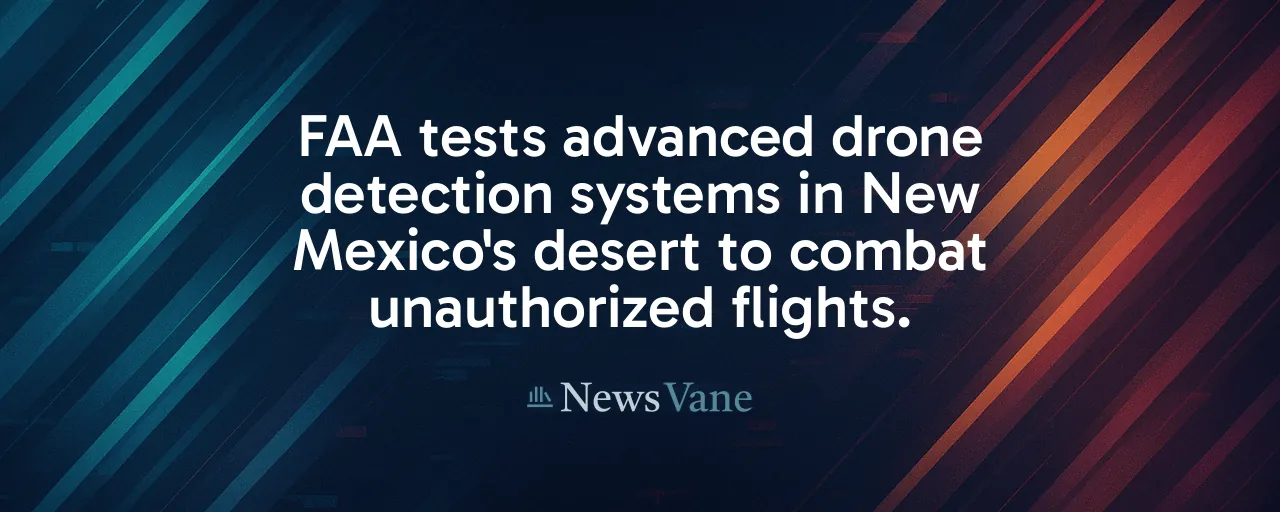A Testing Ground for Safer Skies
Starting June 16, the sun-scorched desert near Santa Teresa, New Mexico, will host an unusual experiment. For two weeks, the Federal Aviation Administration will run drone-detection tests, flying large government drones and about 100 off-the-shelf models across the arid landscape. Partnering with U.S. Customs and Border Protection, local first responders, and the Doña Ana County International Jetport, the FAA aims to tackle a growing problem: unauthorized drones invading restricted airspace.
The numbers tell a stark story. Each month, the FAA records over 100 drone sightings near airports. In the first three months of 2025, the agency documented 411 illegal incursions, a 25.6 percent rise from the same period in 2024. These incidents range from hobbyists straying too close to runways to drones smuggling drugs across borders or spying on military bases. A single misstep could lead to a catastrophic collision with a passenger plane or disrupt vital infrastructure.
Probing Detection in Real Conditions
This New Mexico trial is the third in a series of off-airport tests to evaluate drone-detection technologies. Previous efforts unfolded in Alaska's harsh wilderness and Cape May, New Jersey's coastal wetlands. The FAA selected Santa Teresa for its extreme heat and dry terrain, which push sensors to their limits. From June 16 to 27, tests will run during daytime hours over the desert and near the old Rio Grande Speedway, with the public urged to avoid flying recreational drones nearby.
The focus is on assessing radar, radio-frequency, acoustic, and electro-optical systems. These tools are designed to detect drones reliably without disrupting FAA navigation systems or aircraft operations. The tests build on 46 recommendations from a 2023 FAA advisory group, which emphasized minimizing interference with the National Airspace System. Upcoming trials in North Dakota and Mississippi will further refine these systems, paving the way for broader deployment.
Security Needs Meet Privacy Questions
The urgency to counter rogue drones is clear. Supporters of stronger measures, including some federal and state officials, point to risks like drones colliding with airliners or enabling criminal activity. Recent policies have expanded restricted airspace over key sites and funded detection tools for local law enforcement. Along the U.S.-Mexico border, fears of cartel drones carrying surveillance gear or weapons have spurred plans for advanced sensor networks and modular defense systems.
However, expanded detection raises concerns about personal freedoms. Organizations like the Electronic Privacy Information Center and the American Civil Liberties Union caution that AI-powered detection, combined with mandatory drone ID signals, could lead to widespread tracking without oversight. In a May 2025 statement, these groups called for strict data limits, public reporting, and protections for activities like protests or journalism to prevent overreach.
Beyond borders and airports, drones pose everyday challenges. They've crashed into stadiums, smuggled weapons into prisons, and disrupted police operations by aiding suspects. The FAA has proposed over $341 million in fines since late 2022, but many local agencies lack the tools or authority to act. This gap fuels a broader debate about equipping communities while safeguarding individual rights.
Shaping the Future of Airspace
The Santa Teresa tests are a critical step toward safer skies. By studying detection systems in real-world settings, the FAA is gathering data to certify technologies for airports, public events, and sensitive sites. These efforts will inform rules to integrate drones into daily life, think package deliveries or air taxis, while curbing unauthorized flights.
Finding harmony between safety, innovation, and privacy is no small task. As drones multiply in industries like farming and logistics, effective detection becomes essential. Equally important are clear policies to ensure security tools don't undermine civil liberties. The FAA's work, paired with open dialogue, offers a chance to address these issues with care.
For now, the New Mexico desert is a testing ground for solutions that could define our shared airspace. The results may help ensure it remains secure, accessible, and equitable for all.
